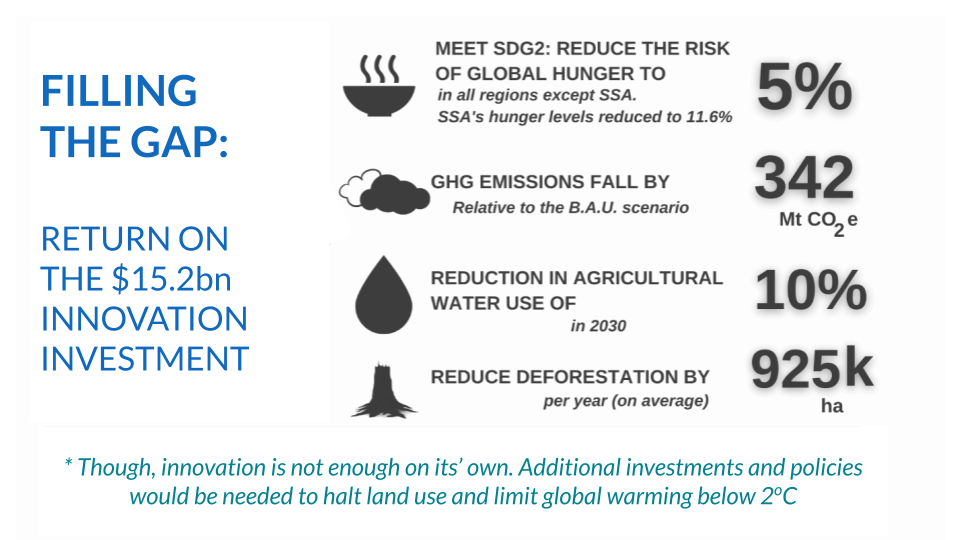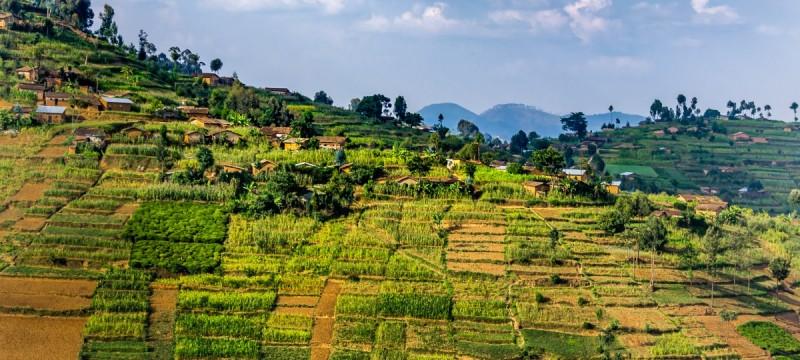Mapping investments in innovation in agricultural production

To pursue the ambition for improved investment in innovation, CoSAI took the approach of first understanding the current innovation investment landscape to provide a baseline of investments. The Innovation Investment Study analyses agricultural innovation investments to establish an understanding of how much is being invested, who is investing, and where the investments are going.
At the same time, a second study, the Investment Gap Report, modeled the gap that needs to be filled if we are to meet some of the globe’s key goals, such as ending hunger, reducing emissions from agriculture, and more sustainably managing the earth's water resources.The study determined how much funding is required for innovation investments in agriculture to support the achievement of SDG2 (zero hunger) and advance agriculture’s contribution to the Paris climate goals, while reducing impacts on nature and accelerating income growth and economic development in the Global South.
Going forward, CoSAI is developing evidence to understand how we can fill the gap and reorient investments to include sustainable agricultural intensification (SAI) objectives. CoSAI research is helping to answer this question by evaluating how well different innovation investment approaches and instruments support SAI objectives, looking at case studies that have achieved SAI innovation success at scale, and reviewing innovation in financial mechanisms to support an inclusive sustainability transition in agriculture.
Strengthening this understanding of how we can do innovation better, CoSAI is developing a clear set of principles and metrics for planning, guiding, and monitoring innovation investments against Sustainable Agricultural Systems objectives. As a package the principles and metrics aim to encourage and support a higher level of investments in innovation with environmental and social goals.

Title
Explore the evidence
Explore the evidence
Title
STUDY: Baseline Investment in Innovation
The baseline study found that roughly USD60bn is being invested annually into innovation in the Global South. The majority of investments (roughly 85%) are being funded by Global South governments and the private sector. This raises a clear point: if innovation is going to be transformative in future food systems, partnerships between national governments of the Global South and the private sector are crucial, with development partners needing to play a catalytic role in enabling these partnerships to have impact. Though alarmingly, of this investment, only 7% explicitly contains environmental objectives, and of this, only half includes social or equity objectives. THIS NEEDS TO CHANGE!
CoSAI is recommending a rebalancing of the innovation investment portfolio to ensure that environmental and social goals are addressed through innovation investments in sustainable agriculture intensification.
Title
STUDY: Global Investment Gaps in Innovation
The evidence from the Investment Gap Study found that the funding gap sits at USD15.2bn annually...
...USD4bn is required for funding research and development to achieve SDG2 in East Asia, South Asia, and Latin American and the Caribbean and reduce the risk of hunger from 24.3% to 11.8% of the population in sub-Saharan Africa.
...USD6.5bn is required for climate-smart technologies at scale that will reduce and sequester emission, helping agriculture approach the goal of the Paris Agreement - keeping global warming within 2°C.
...USD4.7bn is required for improving water management, lowering agricultural water use by 10% in less than a decade.
In total the USD 15.2bn in extra investments, if channelled through SAI investments, would bring the world closer to a more environmentally sustainable, socially equitable, and productive global community.